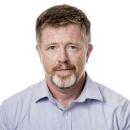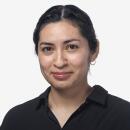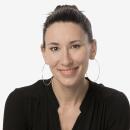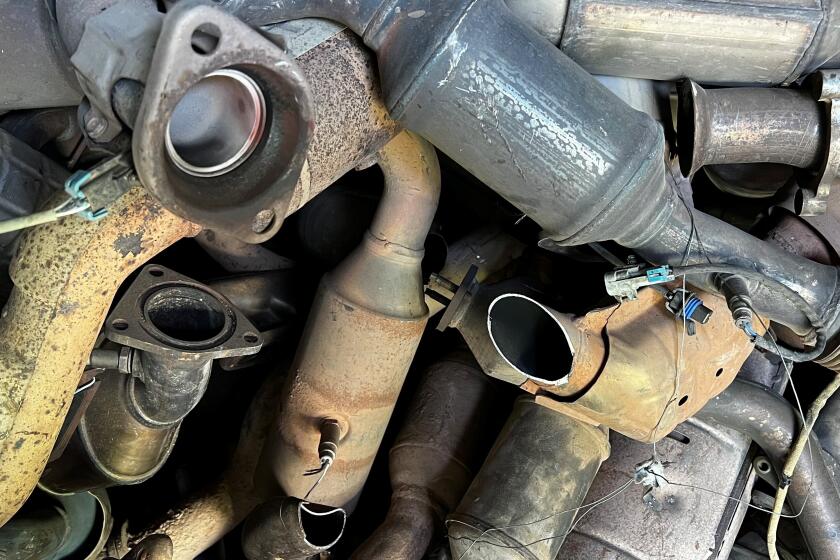
- Share via
The faithful in Los Angeles, America’s most Catholic city, were delighted — and a little stunned — Thursday to learn a Chicago-born priest with deep roots in Peru had been elected to lead the world’s 1.4 billion Catholics.
The elevation of Cardinal Robert Francis Prevost, 69, to pope marks the first time someone from the U.S. has been entrusted with what is arguably the highest-profile position in global religion.
It was an outcome that caught many followers of the Catholic Church, which has been shifting its focus away from its shrinking base in Europe to the growing number of faithful in the global south, completely by surprise.
“I had kind of discounted it, because, you know, we didn’t think that an American would necessarily be a good idea,” given the amount of power and influence the U.S. already wields in the world, said Father Allan Deck, a theology professor at Loyola Marymount University in Los Angeles.

But because Prevost, who has chosen to be called Pope Leo XIV, spent decades serving the church in South America and had risen to leadership of an international religious order known as the Augustinians, Deck said he’s uniquely positioned to unify Catholics around the globe.
He might also inspire a resurgence of the faith in the United States, where many parish pews have been sparsely populated for decades.
“The choice is absolutely inspirational; I am thrilled,” Deck said.
The announcement was doubly sweet for Carolina Guevara, chief communications officer for the L.A. Archdiocese, who was in Piura, Peru, celebrating her grandmother’s 105th birthday when the new pope was announced.
“It’s really a reflection of our immigrant church to have a pope who is Peruvian and American,” Guevara said. “To hear him break the tradition and speak in Spanish to address his hometown — that was such a beautiful moment as well. That filled our hearts.”
For Catholic Angelenos, and Peruvian immigrants in particular, “there’s going to be a sense of great joy,” she said.
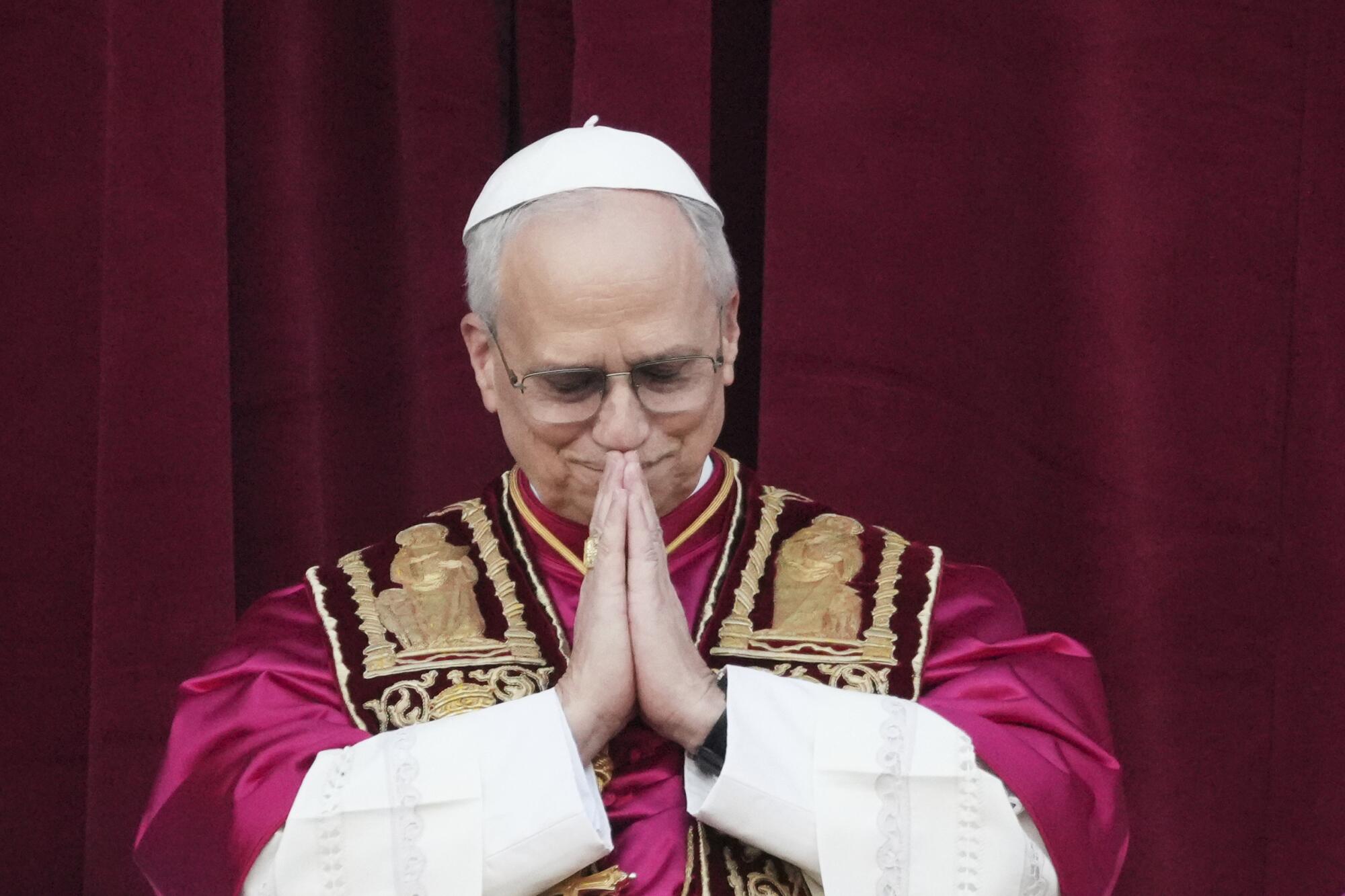
And much like metropolitan Los Angeles, it’s hard to overstate just how cosmopolitan the new pope is.
He was born in Chicago to a father of Italian and French ancestry and a mother of Spanish ancestry. He pursued his education in the U.S. and Italy. He is a naturalized citizen of Peru, where he was a priest for 20 years. He speaks English, Italian, Spanish, Portuguese and French.
His diverse background and broad exposure to different cultures had California’s Catholic community buzzing with excitement, hope and a sense of familiarity.
“He really understands what is the reality of the different cultures of the United States,” said Los Angeles Archbishop José H. Gomez. “Those cultures are a real blessing for us.”
Joseph Tomás Mckellar, director of Pico California, a large faith-based community-organizing network, was euphoric Thursday morning, minutes after Prevost finished his first speech as pope from the balcony overlooking St. Peter’s Square in Vatican City.
“I’m so emotional, I’m just kind of shaking,” he said. “What we have is a pope who is a bridge builder, who is going to carry on in the footsteps of Pope Francis and ensure the church is proximate to those who are most excluded, who are on the margins, who feel lost in the turbulent times in our world.”
“The fact that they selected an American who went out [into the world] says something about the priorities of the church,” Mckellar added.
Those priorities had to change because the church itself is changing so quickly.

Once firmly anchored in Rome and drawing its top leaders from Europe, the Catholic Church has seen its parishioner numbers shrink in countries such as Italy and Spain, and barely hold steady in most of the United States.
The real growth is almost exclusively in the Southern Hemisphere — where the church still dominates culture, politics and many aspects of daily life.
For example, Brazil has more than 120 million Catholics, accounting for more than half the population. In Mexico, nearly 100 million Catholics make up more than 70% of the population. And in the Philippines, more than 75 million Catholics account for greater than 80% of the population, according to the Catholic World Mission.
So when an Argentinian cardinal was elected pope in 2013, many in the church hailed it as a welcome, almost inevitable evolution. That was until Pope Francis, as he chose to be called, started acting in unpredictable ways.
He repudiated the luxurious trappings favored by some cardinals, and his hands-on devotion to the poor broke with many long-standing traditions, and added a populist flair to others.
For example, on Holy Thursday, popes traditionally washed the feet of 12 male priests, a show of humility meant to echo Jesus’ washing the feet of his disciples the night before he died. Pope Francis shocked conservatives when he expanded the ritual, moving it outside the confines of the Vatican and making it a symbol of inclusion, washing the feet of prisoners, women and Muslims.
Francis created positions of authority for women, including putting a nun in charge of a major Vatican office for the first time in the church’s 2,000-year history. And while maintaining the church’s long-standing tenet that gay sex is sinful, he said that merely being gay is not a crime and met with LGBTQ+ people from around the world.
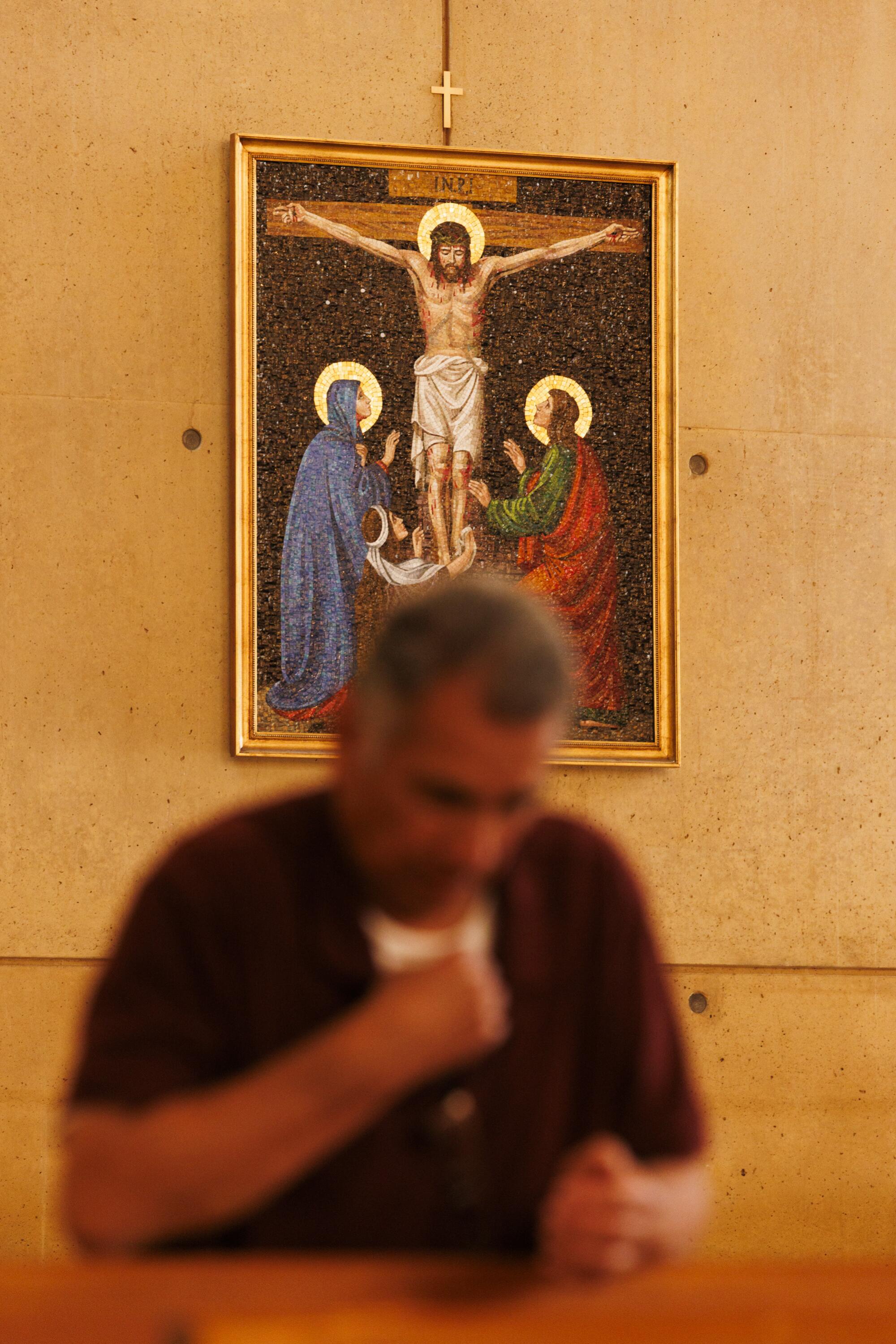
Progressives in the church hope Pope Leo will continue where Francis left off.
Leo has been criticized for previous comments about the LGBTQ+ community, Mckellar said, but he trusts the new pope will continue in Francis’ footsteps.
“I cannot imagine that he is not going to build on the opening of the doors of mercy, and welcome all people, including our LGBTQ+ siblings,” Mckellar said.
Others questioned whether the new pope will have the charm and social media savvy required to perform as the front man for Christianity.
“One thing we still don’t know about Leo is whether he has the personality for the modern papacy,” said Richard Wood, president of the Institute for Advanced Catholic Studies at USC. “I think his humility comes across loud and clear, but does he have the charisma Francis had for the social media age? I suspect it will be a quieter version of that, if he has it.”
He’ll face other challenges as well. Wood pointed out that the Vatican is in real financial trouble.
“The Vatican has lost a lot of its American, European, African and Asian donors. Can he bring them back to the table?” he asked. “The church is rightly concerned with preaching the Gospels, but it is also a worldly institution that has to pay its bills, and the new pope can help solve some of that.”

More to Read
Sign up for Essential California
The most important California stories and recommendations in your inbox every morning.
You may occasionally receive promotional content from the Los Angeles Times.


